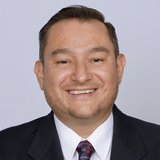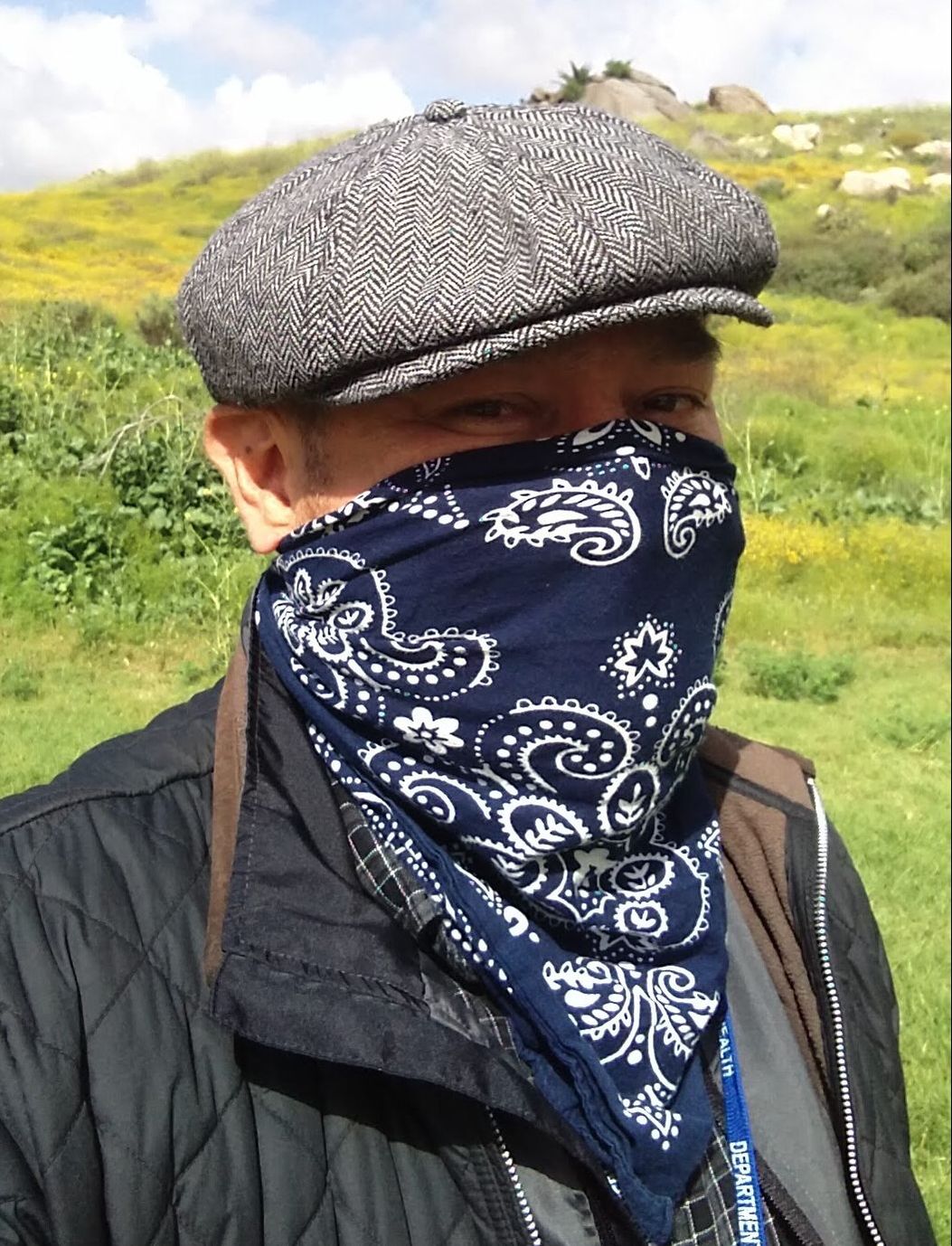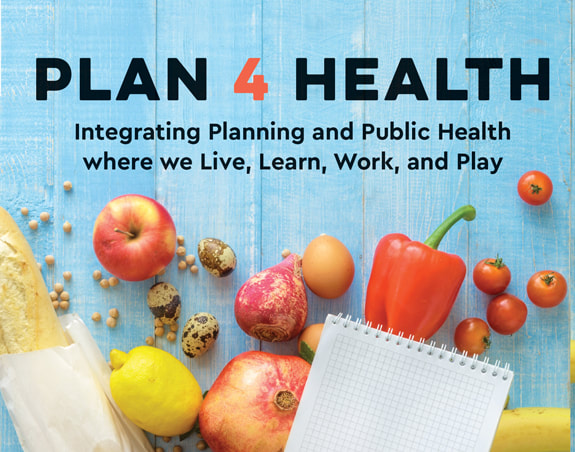|
It has been about 10 weeks since the COVID-19 crisis anchored in my memory. I had been aware of what was happening with the rapid spread of the Corona Virus in China back in December 2019. On January 29, 2020, however, that distant image turned very real with the news that a flight carrying 240 U.S. citizens originating from Wuhan, China had arrived at March Air Force Base which is located within a 15- minute drive from where I live in Riverside County, California.
The world is a completely different place today than that day when I was promoting the value of public places, social cohesion and community togetherness at a temporary parklet I had helped build in the City of Menifee. Social distancing, isolation and staying in place are now part of my lexicon and are part of my advocacy to help contain and stop the spread of the most significant pandemic of our time. Indeed COVID-19 is a public health crisis, but the methods we are using —stay at home orders, quarantines, shutting down businesses and places where people congregate, etc. --to contain it and eventually eradicate it extend beyond traditional medical interventions. This crisis not only exacerbates vexing planning issues such as affordable housing, homelessness, equitable economic development, food deserts, environmental justice, and many others but it is also creating new challenges in our field. March 12, 2020, is the date that I will always remember as the day when my “normal” routine was ending. On that day, a co-worker had informed me that Disneyland had announced an over one-week closure in response to COVID-19. She said that prior to that, because of extraordinary circumstances, the Happiest Place on earth had briefly closed only 3 unexpectedly times since it opened in 1955. I am not a Disney fan, but I long for the day when the park safely reopens again as that would signal that things are going back to “normal.” As a healthy communities planner --fully aware of the scale and implications of this crisis when it comes to economic, political, environmental and social issues— I had been thinking about how I would be able to make a contribution during these uncertain times to the planning field, but did not know when or how to start. To my good fortune, on March 19, 2020, I received an e-mail from a young planner I met a few years ago when she was inquiring about working in the planning and public health arena. Diana Benitez, who now works for Raimi+Associaties and is the Planners4Health lead for the APA California Section, reached out to me. She was planning to put together a webinar on planning and COVID-19. Her swift action resulted in the Planning+Health in the Time of COVID-19 webinar, which included two main presentations and the ability for folks to join breakout sessions to discuss how COVID-19 is affecting planners and how they are responding to the crisis. The materials, including the webinar recording, the notes from the breakout sessions and a list of resources are now available. The webinar also propelled Planners4Health California to build a webpage dedicated to COVID-19 that includes resources and other relevant announcements. Planners4Health California is more active than ever. We are in need of more planners and public health professionals to help out as we embark on a continuous response to COVID-19. If you have been thinking about getting involved but have not found a way to do so, reach out and let’s have a conversation. Getting through this pandemic and preventing a new one, actually requires significant planning and public health preventive practices. Planners in collaboration with public health professionals are well equipped to do that. by Bill Figge, AICP On July 25, 2019, the San Diego Section of the American Planning Association (SDAPA) and the County of San Diego Health and Human Services Agency (HHSA) division of Public Health Services, jointly sponsored Plan4Health: Integrating Planning and Public Health where we Live, Learn, Work and Play. The program incorporated a half day training for over 80 health and city planners, engineers, and community activists and was designed to provide techniques and case studies for use in designing healthy cities in San Diego County. The event supported Live Well San Diego, the County’s vision of a region that is Building Better Health, Living Safely, and Thriving, and it was funded in part by the CalFresh Healthy Living Program. The program is the first of an on-going series between the sponsors to integrate public health in local and regional plans and policies throughout San Diego County. It was aptly held at the Hive at Leichtag Commons in Encinitas, which is co-located with Coastal Roots Farm, a non-profit educational community farm designed to provide regular access to fresh, healthy foods for low-income families. The program boasted eight knowledgeable speakers that began with a high level view of the County’s activities, a brief history of city planning’s roots in public health, an introduction to the California Healthy Places Index, a workshop using data from two neighborhoods in San Diego, and specific health related planning activities in Oceanside, Vista, and Escondido. The event was facilitated by Miguel A. Vasquez, AICP who is a Communities Urban Regional Planner in the Riverside University Health System-Public Health. Mr. Vasquez is active in the American Planning Association (APA) and plays a key role in integrating public health and planning. Mr. Vazquez ably guided the speakers and the audience through the program. Participants were honored to have Dr. Wilma Wooten, MD, MPH provide the program’s opening remarks. Dr. Wooten is the Public Health Officer for the County of San Diego and has been with HHSA for over 18 years. Dr. Wooten gave an overview of the activities HHSA pursues to improve public health in the county and foster connections with planners. She stressed the importance of collaboration to pursue public health goals. She also shared resources created by ChangeLab Solutions for planning for healthy, equitable communities. The next speaker was Mathew Burris, Deputy City Manager, City of Rancho Cucamonga, who provided a brief history of city planning in the U.S. and its early roots stemming from the poor, urban public health conditions in the late 19th Century. Mr. Burris reminded the audience that planning’s legal basis is in police powers to protect the public health, safety and welfare. He also presented a series of slides of the 50 states that showed how obesity levels had grown dramatically since 1987, resulting in current levels of 64% adults in the country being overweight and 1 in 3 adults diagnosed as obese. Helen Dowling, MPH, Data Manager, Public Health Alliance of Southern California, followed with an overview of the California Healthy Places Index. The index, located at healthyplacesindex.org, is an on-line tool for planners and others that tracks 25 indicators linked to life expectancy and relates them to eight policy action areas. The tool includes mapping, dashboards, and spatial analysis. It is designed to allow easy access to data by census track and is aggregated into larger geographic areas. The index’s goal is for users to apply the data to create actionable steps and serve as a resource for grants and funding opportunities. Breanna Hawkins, Health Equity Strategist, Public Health Alliance of Southern California, led a Social Determinants of Health activity. The audience formed into small groups that then compared two communities located in the City of San Diego. Participants observed differences in socioeconomic factors, community conditions, and health outcomes using group maps and community profiles. Breanna led an audience discussion on the findings of the breakout groups. Lastly, diverse case studies were shared with the group, highlighting the broad array of health focused actions that cities and the County can take. Howard LaGrange, City of Oceanside Bicycle and Pedestrian Coordinator, spoke about his city’s efforts to promote active transportation and Safe Routes to Schools (SRTS) programs. He has tracked early SRTS projects and noted that they did not show increased walking and biking levels. The recent approach is to address the drop-off and pick-up auto travel at schools through improved signage and crosswalks, and by implementing training for crossing guards and school personnel. Herminia Ledesma, Program Manager for Outreach and Migrant Health at Vista Community Clinic (VCC) gave an overview of the VCC’s efforts to engage the community and develop conversations on food environments and active transportation. One unique focus Ms. Ledesma mentioned was training through the Resident Leadership Academy and Healthy Cities, Healthy Residents for community members to develop the skills to talk with city staff including planners, engineers, and politicians . She highlighted some success stories of residents speaking at a Vista City Council meeting and partnering with the City of Vista to successfully apply for an Active Transportation Program grant from CalTrans. Mike Strong, MPPA, MCP, Assistant Planning Director for the City of Escondido, provided a summary of the City’s efforts to better regulate tobacco-product retail outlets. City staff identified that Escondido has a higher than average number of tobacco outlets when compared to other jurisdictions in San Diego County. They conducted a zoning code and land use study to identify the locations and concentrations of these land uses. City staff then used a previously successful effort to regulate storage unit facilities as a basis for best practices to develop zoning code changes applicable to tobacco sales. The proposal goes to the Escondido City Council for possible approval in early August. The event was a great success and participants were asked for topics for future events. Responses include climate change, funding opportunities, and additional tools and resources. The Plan4Health committee will be sharing more networking opportunities soon. The speaker presentations can be found at the following link: https://www.dropbox.com/sh/52g02xjiz9l1wk5/AAB5D7eRDw9VSBEuPQR7QyNya?dl=0 About the Author
Before retiring in 2018, Bill Figge was the Deputy District Director for Planning and Local Assistance in Caltrans District 11. Bill worked within Caltrans District 11, and the Department as a whole, to improve mobility through the efficient, sustainable and practical implementation of transportation processes and projects. He collaborated with federal, state, local and regional agencies in the southern California area, including the Federal Highway Administration (FHWA), Mexican government agencies, Native American tribes, the San Diego Association of Governments (SANDAG), and the Southern California Association of Governments (SCAG). He also served as the Acting Caltrans District Director from January to March 2013 and Caltrans Deputy for Planning and Modal Programs from October 2014 to March 2015. By Samantha Miyamoto  On June 28, 2019, a group of 41 stakeholders came together at Planning for Public Health: Taking Action Through Policy and Design, the American Planning Association, Los Angeles Section (APA Los Angeles)’s first official event and foray into the national Plan4Health initiative. Plan4Health is an initiative co-sponsored by APA and the American Public Health Association (APHA). More information can be found here. The APA Los Angeles team chose to focus on two aspects of life in LA that have great impact on our communities: increased heat and air quality. We came in pursuit of understanding the challenges and currently available solutions to address these issues. We sought an integrated discussion approach to achieving public health goals through urban planning, policy, and design. Public health and urban planning are perhaps two proverbial birds of a feather, but from observation, they may not always flock together. The opportunity to participate in Plan4Health to bring together these professions fascinated me. APA Los Angeles was lucky to have fantastic public health and urban planning panelists from the LA County (Chief Sustainability Office, Department of Public Health), the City of Los Angeles and Bureau of Street Services, TreePeople, UCLA Luskin School of Public Affairs, Keck School of Medicine of USC, and Long Beach Alliance for Children with Asthma. We heard both the challenges and the solutions. Not to be facetious, but there are quite a few. For heat mitigation, solutions include utilizing cooler pavement strategies, increased tree canopy coverage, comprehensive policy support, and pre-intervention data analysis. For air quality improvement, solutions include developing roadside barriers, optimizing ventilation systems, and increasing community-based organization participation and exposure awareness. Implementation continues to be a challenge. This event taught me that there are multiple organizations and constituents concerned about the confluence of the systems creating today’s realities – the systems that either improve or negatively impact the socioeconomic determinants of health. These entities are working hard to not only mitigate issues but also improve general wellness. It was encouraging to see various community members provide feedback in the form of a post-event survey on impressions and lessons learned from the event as well. Some feedback I received indicated that as a whole, we still “lack a coherent strategy”. It’s a hard but necessary realization to come to, even amidst all the work we do. We need to define this strategy. But no agency or entity can do it alone. While I would consider this first event run generally successful, much work remains to provide answers to the professional and general community’s burning questions on improving health by mitigating the impacts of heat and poor air quality through the built environment and design. The community at large still wants answers. They want opportunities to discuss their perspectives and provide possible solutions. We gave them one opportunity here, but we need to give them more. As working urban planning and public health professionals (and as community members, I would also argue), we have a moral imperative to act (and to act quickly and efficiently) with the best available technologies to mitigate the negative impacts of high heat and harmful air quality. In the process of creating our professional communities, we so often segment ourselves and forget to talk to one another, to learn from others’ experiences and expertise. At the risk of speaking for others, we forget the impacts of working in siloed environments. This must change. Fictional President Jed Bartlet once quoted in an episode of the West Wing, “Change comes in excruciating increments to those who want it.” While I find that truism to be generally true, perhaps we can try to buck the trend in our own work. To a better future! Samantha Miyamoto is the ad hoc committee chair for American Planning Association, Los Angeles Section (APA Los Angeles)'s Plan4Health initiative.
— This post reflects the views of the author and not necessarily those of APA Los Angeles as an organization. --  On behalf of the APA California Planners4Health team, I am thrilled to announce the launch of our website. Here, you will find the most prominent information available related to the growing collaboration between the American Planning Association (APA) and the American Public Health Association (APHA) in California. We envision this website as the premiere destination for ALL planners (members and non-members of APA) and ALL public health professionals (members and non-members of APHA) and community health advocates to find the resources needed to connect and collaborate. We encourage all visitors to the website to suggest resources, ideas, projects, policies, plans, etc., that can be featured and included in our resources page. We also welcome guest authors who would like to contribute stories that relate to the intersection of planning and health for our blog. Please visit our contact page to let us know about who you are and how we can be of service to you. Miguel A. Vazquez, AICP APA California Planners4Health Task Force Member |
AuthorThe APA California Planners4Health Team and Guest Authors Archives
April 2020
Categories |





 RSS Feed
RSS Feed